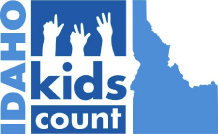Idaho ranks No. 20 in a new national report on child well-being — but spotty grades on education issues pull down the state’s overall grade.
 According to the 2013 KIDS COUNT Data Book, released Monday, Idaho ranks No. 29 in educational topics.
According to the 2013 KIDS COUNT Data Book, released Monday, Idaho ranks No. 29 in educational topics.
The report keyed in on 66 education yardsticks, from demographics to test results. Among the findings:
Early learning. Only 35 percent of Idaho’s 3- and 4-year-olds attend preschool; the rest, some 30,000 young children, attend no preschool. These numbers have stagnated in recent years, according to KIDS COUNT research. Idaho ranks No. 46 in this category.
Idaho’s low preschool attendance numbers should come as little surprise, as early education has long been an unresolved and emotional debate in the Statehouse. Pre-K advocates and some business leaders have argued for early education, calling it a cost-effective investment in children; critics, including state superintendent Tom Luna, have questioned whether the state has the money to expand into pre-K. Social conservatives also say children are best taught at home in the formative years before kindergarten.
One bright point: Idaho parents are reading to their preschoolers, in greater numbers. Nearly 90 percent of preschoolers have a family member who reads to them at least three times a week.
Reading scores. Compared to other states, Idaho fourth-grade reading scores have stagnated in recent years, ranking No. 26 nationally. The good news: 88.9 percent of Idaho fourth-graders received “advanced” or “proficient” scores in the 2012 Idaho Standards Achievement Test.
“We know that Idaho’s children need to read well by fourth grade so that they can succeed in school and go on to have productive careers,” said Lauren Necochea, director of Idaho KIDS COUNT. “Children who are not reading proficiently by this measure tend to fall behind and stay behind.”
Math scores. These numbers have also stalled in recent years. According to the report, 37 percent of Idaho eighth-graders were graded as proficient on the National Assessment of Educational Progress; that’s down from 38 percent in 2009, but up from just 28 percent in 2003. Idaho’s overall ranking was No. 20.
Graduation. One area of improvement. In 2005-06, 20 percent of students did not graduate on time; by 2010-11, this number had dropped to 16 percent.
Meanwhile, some 4,000 Idaho teen-agers are high school dropouts; they are 16- to 19-year-olds who are not in school and do not have a high school diploma. As recently as 2009, that dropout number was 6,000.
Here again, this isn’t necessarily a surprise. Idaho’s high school graduation rates repeatedly rank near the top nationally — but the state’s college attendance graduation rates rank near the bottom nationally.
The full report grades the states on criteria ranging from children living in single-parent households (where Idaho ranked second-best in the nation) to children who are not covered by health insurance (Idaho ranked No. 38 nationally).
The KIDS COUNT survey is funded by the Annie E. Casey Foundation. The Baltimore-based group seeks “to foster public policies, human-service reforms, and community supports that more effectively meet the needs of today’s vulnerable children and families.”
